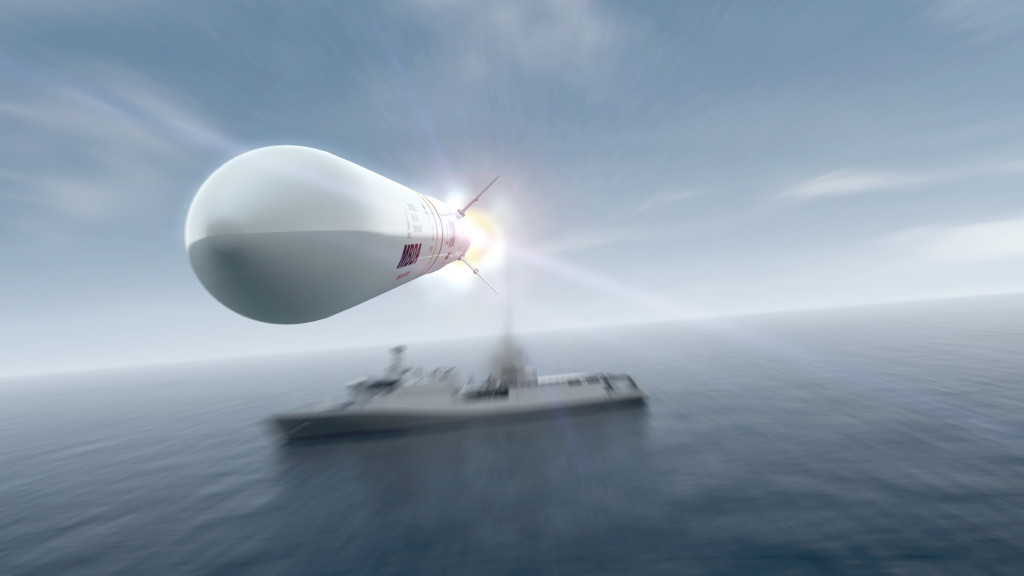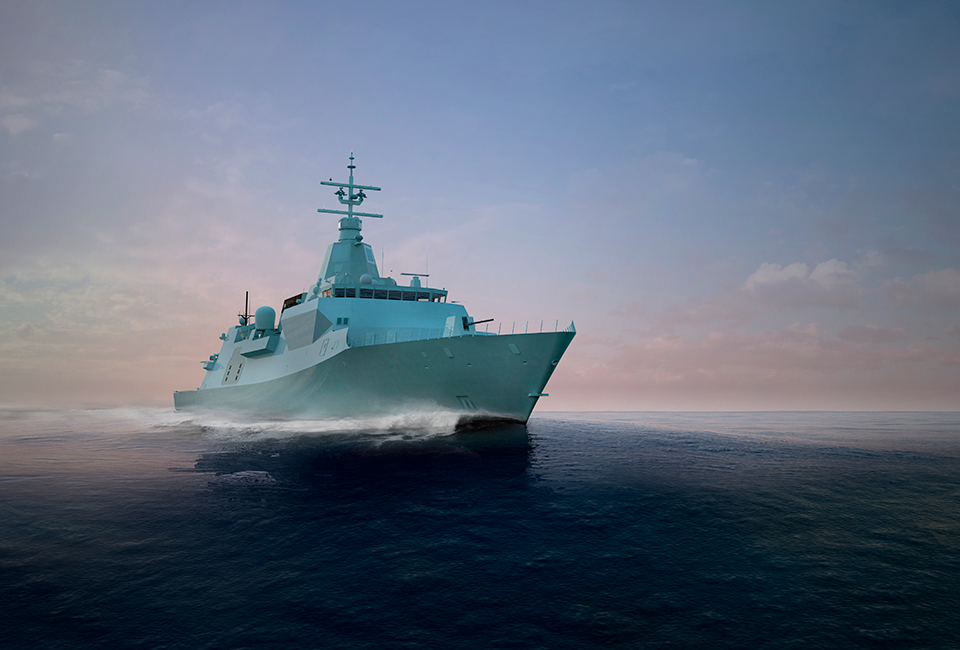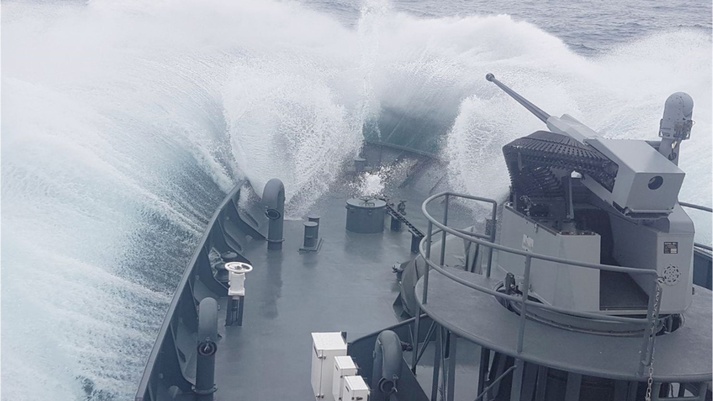Great summary. Here are some of the things I've noticed regarding the CSC based on your points:
- Volume Search Radar: SPY-7 (V1), S-band (supplied by LM)
Technical issues and concerns about cost, coupled with public outcries and embarrassing blunders have hampered the project.

www.thedrive.com
It looks like Japan's LRDR/SPY-7 based Aegis Ashore project has been placed on indefinite hold. The main issue seems to be SM-3 booster rockets falling on populated areas and improper placement of one of the Aegis Ashore sites although there are concerns about radiation output from the LRDR. Hopefully radiation is less of a concern for the smaller SPY-7 arrays in the CSC. Japan's Aegis Ashore coming online in 2023 would have helped de-risk the SPY-7 for later users so if it's on hold for a long-time or ultimately cancelled that likely means more development time and cost will have to be borne by Canada and Spain.
- Illuminator: Unknown. (Supplied by MDA. Not known if this is a bespoke or existing design.)
Telephonics Corporation is recognized globally for advanced surveillance, communications, analysis and integration solutions.

www.telephonics.com
Telephonics’ APS-143G and AN/APS-508 multi-mission radar combines high-performance maritime, littoral and land ISR capabilities.

www.telephonics.com
Italian aerospace and defense firm Leonardo SpA <LDOF.MI> and France's Thales SA <TCFP.PA> are considering the joint acquisition of a space business from U.S. firm Maxar Technologies Inc <MAXR.N>, Leonardo's CEO said on Tuesday.

www.reuters.com
In order to provide the radar for the CP-140M Aurora modernization, MDA partnered with Telephonics to customize/enhance the APS-143 to Canadian requirements resulting in the APS-508. Since MDA hasn't previously directly developed naval radars themselves it seems likely that a similar process will take place for the CSC where they'll partner with and customize an existing X-band radar. No solid idea who that will be though. Thales (who have the X-band APAR Blk2 and NS50) and Leonardo (who have the X-band StarFire) both have existing partnerships with MDA and were considering buying MDA when it was up for sale last year but that could be circumstantial.
- 32 x Mk41 strike-length VLS (ESSM, SM-x)
Sea Ceptor is the next-generation, ship-based, all-weather, air defence weapon system.

www.mbda-systems.com
Has it been confirmed that all 32 Mk41 cells are strike length? Hopefully this isn't too naive a question, but does anyone know what the average deck height of a warship is? I haven't found a good reference, but I'm presuming 10-11 ft. The mushroom caps for the Sea Ceptor launchers stick up above the deck of the Type 26 and the Sea Ceptor is 10.5 ft tall so the existing system seems to only be 1 deck high. Strike length Mk41 are 25 ft high, Tactical length are 22 ft high, and Self-Defense are 17 ft high. With the efficiency of ESSM quad-packing and with seemingly no Phalanx and only 24 x Sea Ceptor it seems reasonable the CSC would always want to carry some ESSM for local area defence so that Sea Ceptor can be reserved for close-in use. So if the CSC always carries 32 x ESSM, using a Tactical or Self-Defense Mk41 for the forward 8-cell launcher saves 1 deck of space underneath. It'll probably also lead to more efficient compartment layout on that lower deck since you no longer have to work around that awkward T-shaped Mk41 layout.
Canada’s new fleet of surface combatants includes Lockheed Martin Canada’s internationally renowned and Canadian-developed combat management system, CMS 330.

www.lockheedmartin.com
On the other hand, are those CSC pictures on the project website new or old? If I remember correctly, older pictures of the CSC showed only 24 x Mk41 VLS and no ESM/EW bulbs on the side of the superstructure. The recent trade show models showed 32 x Mk41 VLS and the ESM/EW bulbs. These CSC project page pictures show 24 x Mk41 VLS and the ESM/EW bulbs. Do these pictures represent an old transitional configuration or has the number of Mk41 VLS dropped to 24 which really seems insufficient in the AAW role compared to other AAW frigates/destroyers?
- Secondary guns: 2 x 30mm DSM 30 (Bushmaster 30mm) - presumed. (Could be the Mk38 25mm, for compatibility and supply chain reasons with the AOPVs)
The 30mm Machine Gun System (MGS) offers superior capability in defending against multiple threats, including unmanned aerial systems (UAS).

www.baesystems.com
I only just noticed that BAE has started offering Rafael's latest Typhoon Mk-30c as the BAE 30 mm MGS since December 2019. The advantages over the existing Typhoon/Mk38 include the adoption of the 30 mm Bushmaster, more than double the ready ammunition, and being better at aerial engagements, presumably more UAV focused than anti-missile, due to being capable of elevations above 65 degrees compared to just 40 degrees and being able to fire Air Burst Munitions. Limited aerial engagement capability should hopefully make the 25 mm Mk38 less likely, while BAE would likely push hard for their own 30 mm MGS since Canada isn't an existing 30 mm DSM 30 user but does use the 25 mm Typhoon and the 12.7 mm Mini-Typhoon which have commonality.
- Speed: Reputed the SOR required the capability to keep pace with a US CBG, which is widely thought to be around 30 knots. Given the current Halifax class can meet this performance standard, it seems likely that the RCN would like to maintain the capability.
A federal trade tribunal has dismissed a challenge to the federal government's handling of a high-stakes competition to design the navy's new $60-billion fleet of warships.
www.ctvnews.ca
It's a little bit concerning that the challenge to the Type 26 design choice for the CSC which included the accusation it couldn't meet the mandatory speed requirements was tossed out because of lack of standing leaving the specific accusations unaddressed.
MT30 Marine Gas Turbine

www.rolls-royce.com
Rolls-Royce does say the MT30 is available in a 36MW or 40MW configuration and can potentially be configured for even more power so there is an upgrade path available to achieve more speed. Although I believe every MT30 application to-date has been 36MW so perhaps there are undesirable trade-offs with up-rating the engine possibly with fuel efficiency, noise, and/or reliability.
The CSC models have also shown 8 missile launchers above the Mission Bay:
- Boxed Missile Launchers: 8 x NSM











